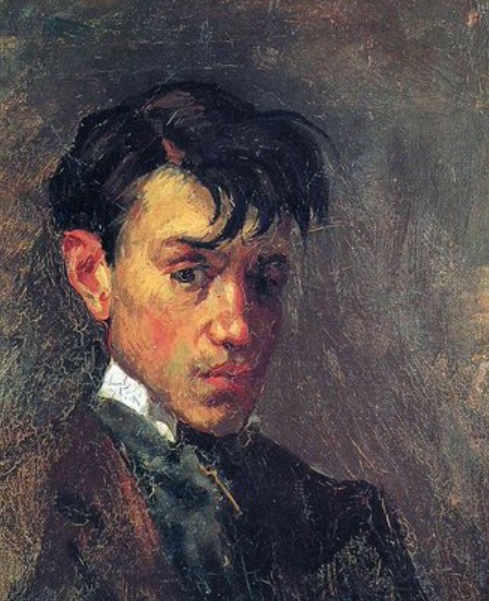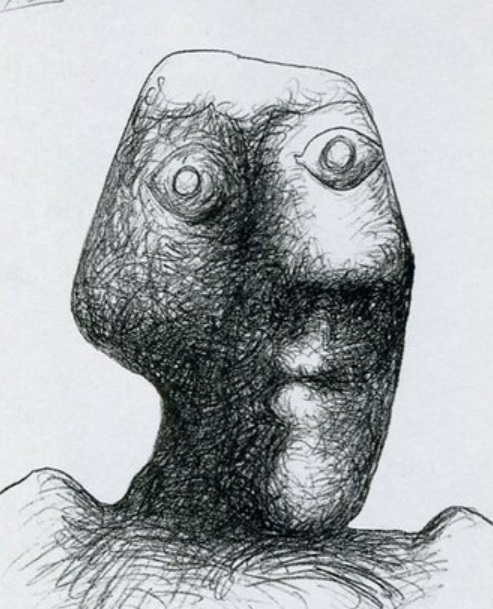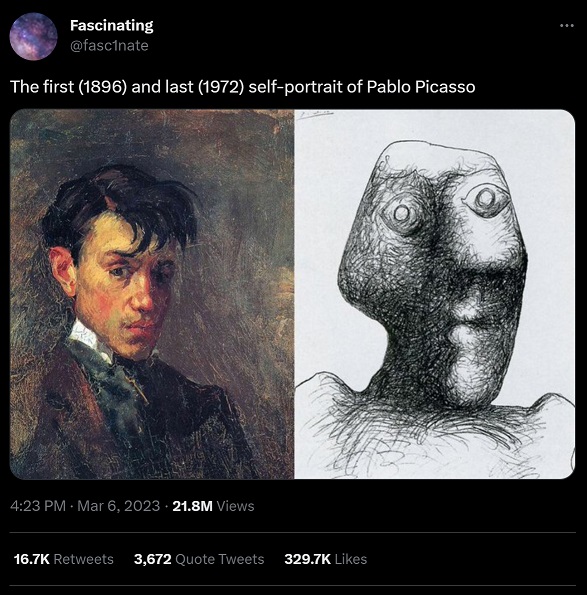Why Was Pablo Picasso’s First Self-Portrait from 1896 So Different From his Last Self-Portrait from 1972?
Pablo Picasso (1881-1973) was one of the most influential and prolific artists of the 20th century. He is widely known for his innovative and diverse styles, ranging from realism to cubism to surrealism. He also experimented with different media, such as painting, drawing, sculpture, collage, and ceramics.
One of the most fascinating aspects of Picasso’s artistic journey is his self-portraits. He painted himself throughout his life, from his teenage years to his old age. His self-portraits reflect not only his physical appearance but also his psychological state, artistic vision, and personal relationships.
Recently, two of Picasso’s self-portraits have gone viral on social media for their striking contrast. They are his first and last self-portraits: one made in 1896 when he was 15 years old, and one made in 1972 when he was 90 years old.
The first self-portrait shows a young Picasso with a confident gaze and a realistic style. He wears a suit and a tie, indicating his formal education at the La Llotja School of Fine Arts in Barcelona. He also displays his technical skill and mastery of light and shadow.

The last self-portrait depicts an old Picasso with a distorted face and an expressionist style. He uses crayons on paper to create bold lines and vibrant colors. His eyes are large and piercing, while his mouth is twisted into a grimace. He seems to confront death with defiance and fearlessness.

Many people have commented on these two self-portraits online, expressing their shock, admiration, curiosity, or confusion. Some have praised Picasso for his genius and originality; others have criticized him for his egotism and ugliness; still others have questioned whether he was human at all.

Why Was Pablo Picasso’s First Self-Portrait from 1896 So Different From his Last in 1972?
The difference between these two self-portraits is astonishing. They show how much Picasso changed over the course of his life, both as a person and as an artist. They also demonstrate how he constantly reinvented himself and challenged the conventions of art.
Whatever one’s opinion may be, there is no doubt that these two self-portraits are powerful examples of Picasso’s legacy. They reveal not only his artistic evolution, but also his human condition.
Explore Related Articles

Here’s Why ‘No Bra Day’ 2022 is Going Viral Again in...
It was October 13 of 2022, which meant it was one of the most important days of the year. It was a day the whole world comes together to bring awareness towards breast cancer, which is one of the leading causes of natural death for women. Each year around...
Is Mark Zuckerberg Scrubbing Evidence While Facebook is Down? Facebook Down...
Instagram and Facebook are down worldwide, and have been offline for hours now. This could possibly be the longest Facebook outage ever. The timing comes shortly after 60 Minutes interview Facebook whistleblower Frances Haugen exposed how Facebook contributed to the January 6th attack on the US Capitol Building. This...
Elder Ellie Henry Leader of Seventh Day Adventist Group and His...
There is very disturbing news coming from Haiti. Elder Ellie Henry the leader of a Seventh Day Adventist group and his daughter have been kidnapped in Haiti for Ransom.
According to reports from Adventist Today, Elder Ellie Henry and Irma Henry were kidnapped while exiting Haiti Adventist Hospital. The...






